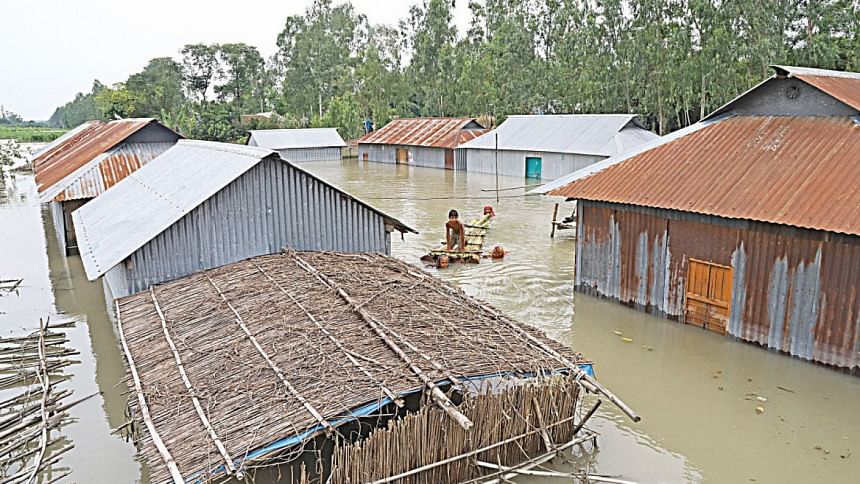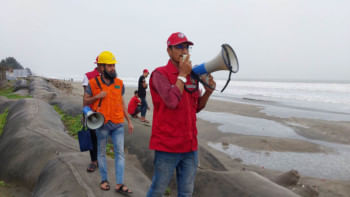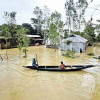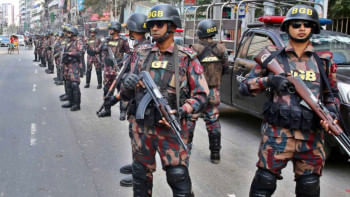Local government for effective disaster management

In Bangladesh, frequent natural disasters have disrupted the foundation of the poor's economy. To decrease the impact of such catastrophes, adequate planning and integration of disaster management operations with local and national development goals is necessary.
The government has taken a few significant steps in recent years to establish institutional frameworks for efficient and organised disaster management, decreasing the suffering of victims. It has developed a series of mechanisms from the national to local levels to maintain proper coordination between the concerned ministries, departments, line agencies, local government bodies, and community members, as well as to ensure their proper functioning. Standing Orders on Disaster (SOD) serve as a manual for these mechanisms and provide instructions on how to use them.
Despite the fact that Bangladesh hasn't seen any large earthquakes recently, historical records suggest that Dhaka, the country's capital, is at a high risk for earthquakes. According to Unicef, there are four million people living in Dhaka's slums. Three out of four slum households are in one-room dwellings that frequently lack access to clean water, sanitary facilities, and proper waste disposal. Due to their residence in low-lying locations, slum residents also run the risk of being evicted and of experiencing disasters. The Ward Disaster Management Committee's (WDMC) existence is essential for efficient disaster management, and to ensure greater community knowledge and engagement. As per the SOD, ward councillors now oversee disaster management committees at the city corporation level. The WDMC has been given the authority to operate as an urban disaster management organisation, and it is expected to contribute to emergency planning, disaster mitigation, emergency response, and post-disaster recovery. It must make sure that the local population is continuously aware and equipped to take effective precautions for the reduction of risk at the household and community levels.
The WDMC must also conduct a ward-level hazard, vulnerability, and risk analysis, and create a risk reduction action plan (RRAP) and an emergency plan for hazards such as earthquakes. Through quarterly coordination meetings, the committee is tasked with fostering collaboration between service providers and development organisations. It also makes decisions regarding the execution of risk reduction action plans and evaluates how well they are progressing. Additionally, it strives to raise money locally so that the risk reduction action plan may be put into effect.
Unfortunately, those who live in wards, especially those who are members of vulnerable groups, have very little access to the discussions and decisions made at WDMC meetings. This implies that the vulnerable know very little about the responsibilities and operations of the disaster management committee.
According to community-level consultation results, disaster risk management is still viewed as having low priority and is not effectively incorporated in the many programmes being carried out by city corporations. Although the people who manage and oversee disaster management committees are not experts, the SOD gives them the power to plan and direct disaster management operations. Because local political leadership is not involved in crisis management, public concern and a sense of responsibility are not taken into account.
The WDMC, on the other hand, functions less effectively because its chairman and other members have not received adequate training in how to administer the group. There also appears to be a lack of coordination between the district administration (particularly the District Relief and Rehabilitation Officer) and the urban local government representative, which hinders the effectiveness of the ward-level disaster management committee because both government officers are responsible for managing the resources allocated for disaster management. Disaster management committees at the ward level (the smallest administrative unit of the city corporation) are necessary to coordinate mitigation, preparedness, response, and recovery activities at the local level. This committee can serve as a venue for bringing together those who are wish to lend a hand and those who are actively working for the community.
In order to swiftly determine the magnitude of disasters and address any gaps in the government's ability to respond, it is important to cooperate with the Department of Disaster Management to publish accurate information about these events. This should also emphasise releasing information promptly. It should also be outlined how to kick off coordination with urban local government organisations, especially with ward councillors. The international humanitarian community must ensure that their efforts are sustained with additional community-focused initiatives that directly address readiness.
Dr Mohammad Tarikul Islam is a professor of Government and Politics at Jahangirnagar University, and a former visiting scholar at the University of Oxford, the University of Cambridge, Harvard University and SOAS University of London.
Views expressed in this article are the author's own.
Follow The Daily Star Opinion on Facebook for the latest opinions, commentaries and analyses by experts and professionals. To contribute your article or letter to The Daily Star Opinion, see our guidelines for submission.

 For all latest news, follow The Daily Star's Google News channel.
For all latest news, follow The Daily Star's Google News channel. 









Comments